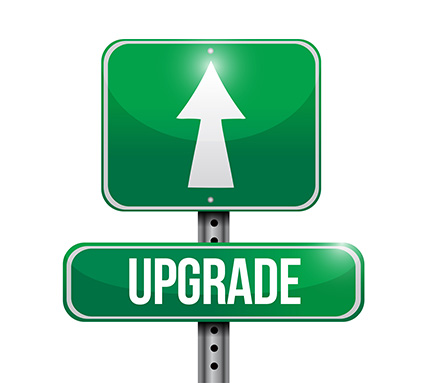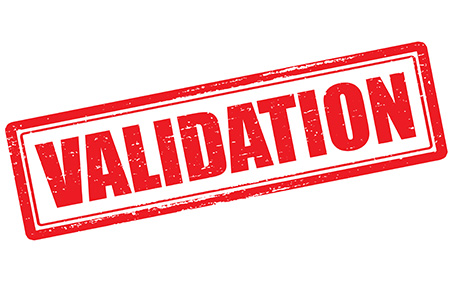 One lesson we’ve learned over the last five years is that there’s very little in the world that’s more important than data.
One lesson we’ve learned over the last five years is that there’s very little in the world that’s more important than data.
It permeates our daily lives. It drives what’s presented to us in social media newsfeeds, on our phones and (of course) on Netflix. But data is also speeding up medical interventions, warning us of rising pandemic cases, delivering goods to us at home in record time, alerting us to foodborne illnesses, automating laborious, manual tasks, and much more.
Scientists, researchers, lab managers and IT departments will all back us up on this: data matters, more than ever.
Data in the Driver’s Seat
After years of being stored and ignored, data is now officially in the driver’s seat. Whether on the front lines of public health, at the earliest stages of drug discovery, performing quality assurance in an Oil & Gas lab, or on the hunt for forensic evidence to solve a crime, labs have begun parsing the vast stores of data they’ve collected to:
- accelerate time-to-result.
- improve the quality of outcomes.
- create efficiencies to enable growth.
COVID sped up the path to digital transformation, and most companies now accept the necessity of it. And while there are many labs who are spreadsheet and even pen & paper driven, LIMS has, of necessity, become data central for most labs – functioning as the bridge between the samples and the solution.
Smoothing the Transition to Technology
Despite the race to seemingly digitally transform everything, some labs remain hesitant to upgrade or take the next step. Hey, it’s understandable! Technology is moving so fast, change seems almost constant. Choosing the wrong path forward is certainly a worse outcome than doing nothing, right?
It can surely seem that way. And yes – there are many factors to consider when choosing new lab informatics. But moving to a modern LIMS is a near-necessity…for some of the very reasons listed above that might be keeping you from taking action.
Regardless of your technology choice, however, upgrading your LIMS (or to a LIMS) offers tremendous benefits. These cross nearly every realm of lab ops – including security, IT, regulatory, research, data management and others. What can you expect from an upgraded LIMS?
- Increased security (HTML5)
- Extended and improved functionality
- Access to bug fixes
- Better integration with current technologies
- More flexibility
- Adherence to new industry standards & requirements
- Avoids excessive customization with update functions
- Improved data management.
Upgrading: The Three Pathways to a New LIMS 
Upgrading can take a few different forms. Which path – and where you are on the path – toward a modern, state-of-the-art LIMS will determine the level of difficulty stepping up. While upgrading or switching to a central data handling and data control application such as a LIMS has multiple pitfalls and can be a daunting task, we have decades of experience working with companies on all three of these paths to help ease your transition.
- Paper to LIMS | starting from scratch
While it is generally understood that making the leap from paper-based systems to a LIMS can be tough, the complications can be mitigated if you’re willing to be a little bit flexible and adopt standardized workflows. This can ease technical adoption and avoid heavy customization, but can also increase internal pushback, as scientists may balk at changing the way they do things. (This is also a common challenge when companies migrate replace lab notebooks with an ELN.)The move from paper to glass does have its complications, from LIMS vetting and selection (a daunting task in its own right), to securing & maintaining internal support – from the top down and lab up, to choosing what types of data to migrate into the LIMS, and corralling data into appropriate formats.With the right consultative partner, you can mitigate these challenges.
- Old LIMS to New LIMS | making the switch
Moving to a different vendor’s LIMS can involve many of the challenges found with those making the migration from paper. There’s the learning curve for learning a new application, which can lead to difficulties with staff adoption & resistance and the need for training. Data migration – while perhaps not as complex as the initial move from paper to LIMS – can also be challenging. Change management is a critical aspect of every successful upgrade.On the other hand, previous experience in a LIMS ecosystem builds familiarity with characteristics that are similar, regardless of platform. This includes a sample-centric approach to workflows, data management, instrument integrations, and much more.One of the biggest challenges involves custom code. Over the course of years, many companies will have modified their LIMS – often through customization. The outcome? There is no guarantee customized functions will survive a vendor software upgrade. But customized systems can face an even more significant hurdle which we discussed in our two-part series on sustainable LIMS and the value of configuration:“If you’re using Good Automation Manufacturing Practices (GAMP) as a guide, making significant changes to a Category 4 system (configured, off-the-shelf-software) causes it to be validated under Category 5, which is usually reserved for only bespoke, custom-coded software.”
The very process of evaluating RFP responses for a new LIMS can also be problematic, which is why it is important to use clear, well-defined concepts to receive qualitatively comparable answers.
- Upgrading to a New Version of Your LIMS | accessing the latest & greatest
Upgrading the LIMS you have to a newer version from the same vendor is perhaps the easiest upgrade pathway. While it does bring with it some of the issues common to moving to a new LIMS, it isn’t quite as problematic.
-
-
- Users are already familiar with the application interface, foundation, overall workflow and functionality.
- IT teams are already familiar with master data requirements and platform capabilities.
- Users, IT teams & other stakeholders may already have relationships with the vendor and their support team.
-
While generally considered the ‘easiest’ upgrade path, it isn’t without its difficulties. Defining master data is a common hurdle, especially as organizations seek to expand what’s included under their LIMS data umbrella to make better use of the data they collect.
What About Upgrading in a Validated Environment?
Regulated environments add another dimension of complexity to the process of upgrading. While a newer LIMS may add regulatory functionalities that previously didn’t exist but are now – or soon will be – required (e.g., the use of digital signatures), regulatory environments have specific challenges that can make the transition more difficult.
Among the most significant issues that arise, companies often have to validate their applications through Installation Qualification (IQ), Operational Qualification (OQ), and Performance Qualification (PQ). These validations are time- and resource-intensive, and are a primary reason why many validated companies lag several years behind the most current version. (Here’s a great explainer on IQ/OQ/PQ at Software Testing Help).
LabVantage helps companies upgrade validated systems, offering validation services and the world’s only Pre-validated, Pre-configured Pharma LIMS. Talk to us – we can help you sort through the complexities of upgrading your LIMS in regulated, validated environments.
Alleviating Painful Upgrade Journeys
Contemplating the move from paper to LIMS? Thinking about switching to a new LIMS? Happy with your LIMS but want to extract more benefit? Whether you’re at the starting gate of digital transformation or just want to take advantage of the latest features, LabVantage has decades of industry-leading experience defining implementation best practices. Let us help you make the switch.
Resources
What could your lab look like? Read about the Lab of the Future.
Is digitization your objective? Here’s some guidance on setting realistic digital transformation expectations.
Wondering how to assess and buy a LIMS? Here’s one of our customers’ stories about their journey.
Worried about data migration? Read how LabVantage handles it in this two-part series
Want to discuss upgrading your LIMS? Reach out!



